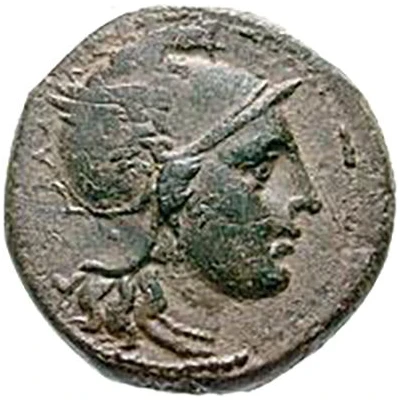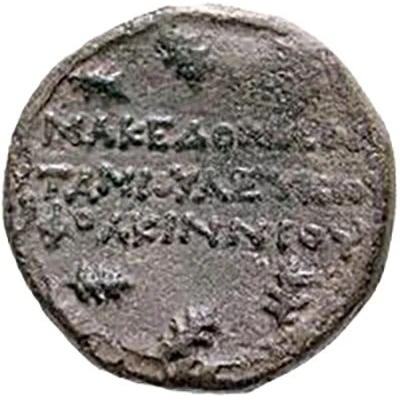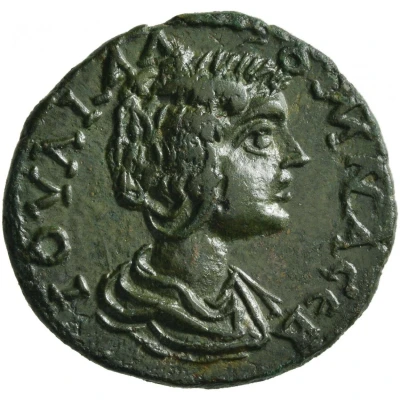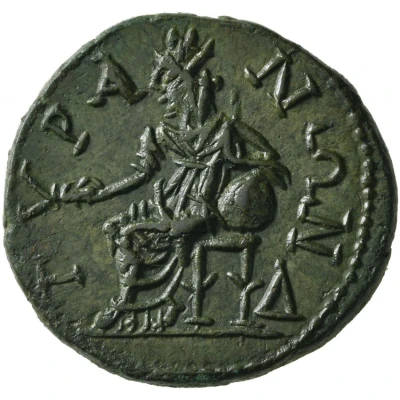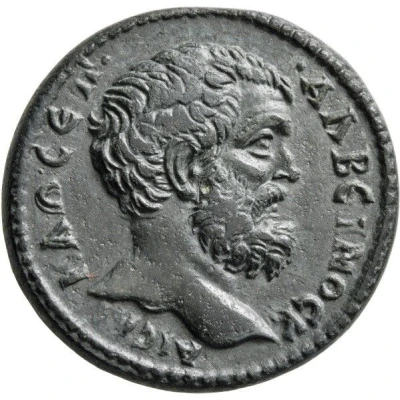
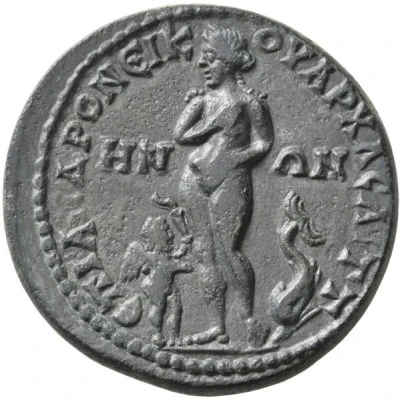

Tetrassarion - Clodius Albinus as caesar ЄΠI•ANΔPONЄIK-OY APX A CAITT/HN-ΩN; Saitta
| Bronze | 16.48 g | 29 mm |
| Issuer | Roman provinces (Rome) |
|---|---|
| Emperor | Septimius Severus (Lucius Septimius Severus) (193-211) |
| Type | Circulating commemorative coin |
| Years | 193-195 |
| Value | Tetrassarion (0.4) |
| Currency | Drachm |
| Composition | Bronze |
| Weight | 16.48 g |
| Diameter | 29 mm |
| Shape | Round (irregular) |
| Technique | Hammered |
| Orientation | Variable alignment ↺ |
| Demonetized | Yes |
| Updated | 2024-10-10 |
| Numista | N#404636 |
|---|---|
| Rarity index | 100% |
Reverse
Aphrodite, nude, standing front, head to left; to left, winged cupid standing right, presenting torch; to right, dolphin swimming downwards.
Script: Greek
Lettering: ЄΠI•ANΔPONЄIK-OY APX A CAITT/HN-ΩN
Comment
As governor of Britain, Albinus refrained from claiming the throne for himself following Pertinax' murder on 28 March 193 and instead allied himself with Septimius Severus, the legate of Pannonia, who invaded Italy and deposed Pertinax' successor, Didius Julianus, in June 193. Septimius appointed Albinus to the rank of Caesar, thereby accepting him as his designated successor to have free rein to deal with Pescennius Niger, the governor of Syria, who had also made a bid for power. This was a wise move on behalf of Septimius, gaining him a strong ally in the West while campaigning in the East, where his generals defeated Niger in three subsequent battles in late 193 and 194.
With Italy, the Balkans, Asia Minor, Syria, and Egypt now under his firm control, Albinus' value for the new emperor vanished, all the more as Septimius had two sons and thus intended to found his own imperial dynasty. It is not entirely clear who commenced hostilities, but the two massive armies of the pretenders eventually clashed in February 196 (or 197) in the Battle of Lugdunum, one of the largest battles in Roman history. After a fierce fight, Septimius prevailed and Albinus was killed on the battlefield, ending three years of civil wars and reuniting the empire under a single banner.
With the East of the empire either under control of Septimius Severus or of Pescennius Niger, only very few provincial mints issued coins in the name of Septimius' Caesar Albinus. In the case of Saitta, this can only have occurred after Septimius' successes against Pescennius Niger in late 193 and early 194, when Asia Minor fell to the victor, and perhaps reflects the desire of local authorities to assure Septimius Severus and his co-emperor Clodius Albinus of the loyalty of the city and in so doing avoid punishment for the previous support of Niger (see lot 125 above). The wonderful craftmanship displayed on this coin is typical for Saitta early in Septimius' reign, which is all the more remarkable considering the turmoil of the years 193-195 and the rarity of Clodius Albinus' provincial coinage. The city must have taken great care to hire a prime available artist for its Severan coinage, resulting in a spectacular portrait of Clodius Albinus that rivals the finest output of the imperial mint in Rome.
Interesting fact
One interesting fact about this coin is that it features an image of Clodius Albinus, who was a prominent Roman general and politician, on one side, and an image of the Roman goddess Victory on the other. This coin was minted during Albinus' reign as Caesar, which lasted from 193 to 195 AD, and was likely used as a way to promote his image and legitimacy as a ruler.
